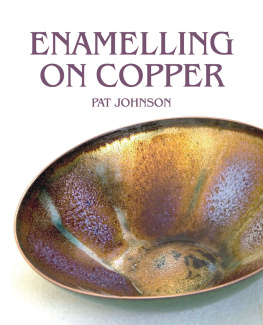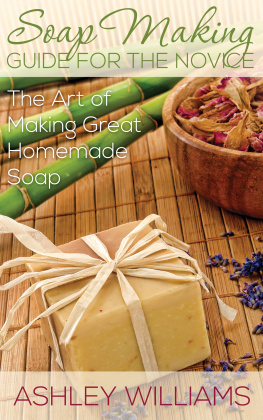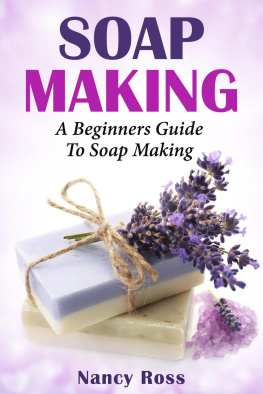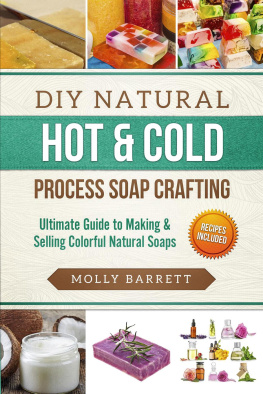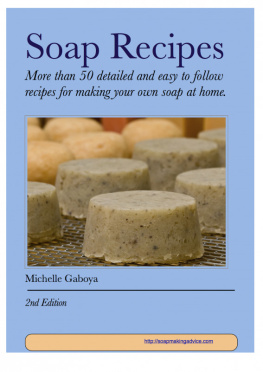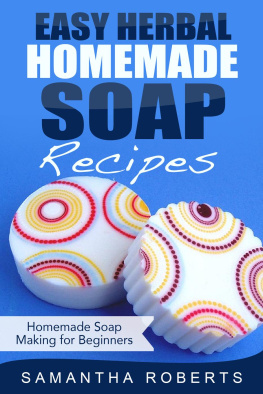Complete Guide to Beginner Soap Making: 20+ Gourmet Recipes Book (Volume 2)
Published internationally by Moon House Publishing:
PO Boleville, Illinois 62223
Moon House Publishing 2014 (Mary Johnson)
Terms and Conditions:
The purchaser of this book is subject to the condition that he/she shall in no way resell it, nor any part of it, nor make copies of it to distribute freely.
Introduction

Have you ever wondered about making your own soap? You might be curious about the process or feel that store-bought soap and other skin care products are too expensive. It may also be that youre worried about the chemical ingredients in your soap and simply prefer the natural and healthier alternative. In any case, dont worry! This book will breeze you through the process of making your own soap at home without any difficulty.
So, before you doubt your own skills, rest assured that if you can make chocolate chip cookies, you can make soap! All the equipment you need are already items you can find in your household if not at your neighborhood grocery store! There is little challenge as this book finely describes in detail the steps in the easiest possible manner. Youll be mixing your ingredients in an average of 30 minutes. Read on, you wont believe it!
Chapter 1: Why You Should Make Your Own Soap

Store-bought Soap is not Real Soap.
Soaps bought from the store may look nice and pretty. They may smell amazing too. However, the majority of the products on the shelf don't actually even say "soap" on their labels, if you look closely on the package. Instead, they might be called beauty bars , moisturizing bars , or body bars , but not "soap". Why? That's because these bars really aren't soap and it is illegal for them to claim to be; they're detergents .
Store-bought Soap contains harmful chemicals. The manufacturers have removed most of the good, natural stuff that occurs in the soap making process, and replaced it with synthetic lathering agents and harsh chemicals. These cheap, plentiful detergent bars are not only bad for your skin, but they're also bad for the earth, too.
Handmade Soap is good for everyone.
The best soap for your skin and our planet is a handmade, organic, all-natural cold-process soap bar. Once you've tried one of these lathery treasures, you'll never again be satisfied with store-bought bars. So do yourself and your world a big favor and start using REAL soap.
Making the soap is easy to do and tons of fun,
so get started now! If you have been following the series and gotten a copy of the first Volume of this book. Then you know why you should be making your own soap, as well as the benefits of homemade soap and are ready to start making your own.
If youve been having a little bit of trouble tracking down some straight-forward information, let me just say something really important: working with lye can be dangerous, if you dont follow safety precaution! You should read a lot and get yourself acquainted with all the steps before you attempt your first batch. To ensure a safe and enjoyable experience, its highly recommended that you read this list of safety tips before you begin:
SOAP MAKING CHECKLIST
In an effort to assist beginner soap-makers with the basics, and as a reminder to the more experienced, heres a list of soap-making basics:
Wear protective gear & clothing rubber gloves, goggles, long sleeves, long pants, & shoes
Run every formula through a lye calculator before using it
Pots: use stainless steel pots. Enamel is ok so long as there are NO chips. No glass heat from lye/water solution can cause glass to shatter
Utensils: use stainless steel. No wood utensils as lye causes wood to splinter over time. Use plastics with caution as some will melt
Use a stainless steel immersion/stick blender to mix lye solution into oils
Use a digital scale that measures at least to 10ths of an ounce & one that measures ounces & grams
Measure by weight, not volume
Dont substitute oils without using a lye calculator to re-calculate the lye amount
Keep a journal or book of formulas, & take notes of every batch
Once you use pots, pans or even the immersion blender for soap making, dont use them for anything else (specially cooking!). Keep those items for soap making only
Line and/or prepare your molds before you start. Theres nothing worse than have your soap reach trace only to realize your mold are not ready
STANDARD SOAP MAKING PROCEDURES
Now that you have read the safety guidelines and the checklist, lets go over some basic, step-by-step instructions. Depending on the recipe youre making, the steps might be a little different. But for simple recipes you can consider these as standard soap making procedures:
- Start by weighting all your ingredients. Dont forget to allow for the weight of the containers by using the tare function on your digital scale;
- To prepare your lye solution, put the weighted water into a bowl or pot, preferably stainless steel. Then slowly and carefully add the lye, stirring constantly. A reaction will occur, heating up the water. Do not let the water boil and dont breathe the fumes. Set aside to cool.
- While the lye solution cools down, add your weighted oils to a stainless steel pan. Heat gently until the oils are melted.
- Take the temperatures of your oils and the lye solution. When both are within 10 degrees of each other (ideally in the 100 to 125 F range), slowly add the lye solution to the oils.
- Mix gently at first, until the mixture takes a smooth texture and color. Then turn on your immersion blender and mix thoroughly, in short bursts of 20 seconds so as not to burn your blender.
- At some point, your mixture will reach trace. Trace is when the surface of the solution starts to show ripples from your mixing and the ripples tend to stay on the surface. It should look almost like very thick custard.
- If youre adding essential oils, fragrances, colorants or other additives, this is usually the time to do it unless noted otherwise.
- Pour this into the molds and place them in the setting area, then
- cover them with the blanket.
- Let the molds sit for about 24 hours, then remove the blankets and lid and let the soap air in the mold for another few hours.
- You should have a nice hard block of fresh soap, which you can now remove from the mold. If its still a bit soft, let the block of soap sit for a day to firm up before unmolding.
- When the soap is firm enough, unmold and cut it into small bars.
- Place the bars in an open box or drying rack for 4 to 6 weeks. Make sure the bars dont touch one another, and remember to turn them every once in a while, so all sides can dry equally.
- While you should be able to test the soap after 2 weeks, it could still be a bit harsh on your skin. So, resist the urge and wait a few more weeks.
- The longer the soap cures, the milder it will be.
SAFETY GUIDELINES
Always store lye in air-tight containers. Label the containers appropriately. A label with DANGER! Sodium Hydroxide and a skull and crossbones or a big red X in a circle is not overkill
Keep containers out of reach of children and pets
When working with lye, youll need to wear safety goggles, rubber gloves, a long sleeved shirt, long pants, socks and shoes
Its a good idea to wear a disposable face mask while working with lye







